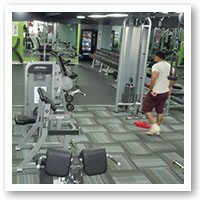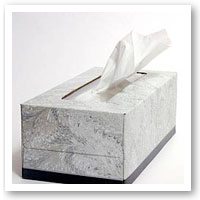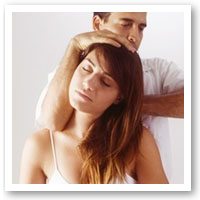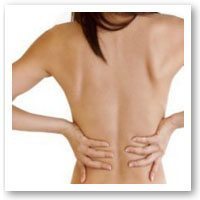Fighting Cellulite.
 Cellulite – many women (if not all) of us have it and are not particularly fond of it. There are simple steps you can take to improve your blood circulation and lymphatic circulation which in turn will help to move on the fatty deposits which cause cellulite and that “orange peel” appearance.
Cellulite – many women (if not all) of us have it and are not particularly fond of it. There are simple steps you can take to improve your blood circulation and lymphatic circulation which in turn will help to move on the fatty deposits which cause cellulite and that “orange peel” appearance.
Dry Skin Brushing
Dry skin brushing is a great way to encourage circulation and to help the elimination of waste from the tissues.
Five minutes of skin brushing with a firm bristle skin brush in the morning before getting in the shower is an invigorating way to start the day and excellent for getting those fatty deposits moving.
Lymphatic Drainage and Reflexology
Lymphatic drainage is a light pressured massage that works to remove waste by stimulating the lymphatic fluid towards specific drainage points in the body. Reflexologist, Cathy, offers lymphatic drainage in her reflexology sessions at Health In The Bay.
Exercise
I know I harp on about it but it’s the best thing anyone can do for themselves, for so many reasons…
Getting the heart rate up improves circulation as well as burning up the excess fat stored in our bodies.
Essential Oils
Massaging the affected area with a combination of essential oils in a base oil, such as almond oil, will help to improve the circulation and therefore the removal of wastes. Oils specific for cellulite are:
- Cypress – which assists in the management of fluid retention and is a circulatory tonic.
- Juniper – is a diuretic known for its clearing, cleansing and detoxifying properties. It also improves circulation
- Geranium – stimulates the lymphatic system and regenerates cells
- Grapefruit – is said to assist in the breakdown of cellulite when mixed with evening primrose oil.
Herbal Medicine
Herbs which have a detoxifying effect and help to move excess water and eliminate wastes can be useful. These include celery seed, dandelion leaf and root, horse chestnut and St Mary’s thistle.
Regular Detoxification
By stimulating bile flow and liver detoxification the body is able to break down fats more efficiently. A good detox will also speed the clearance of toxins stored in fat.
Whether it’s a complete detoxification program or even the regular use of a good quality liver tonic your body will thank you for it.
Detoxification is best (safe and effective) when done under the care of a healthcare practitioner.
Whole food diet and plenty of water.
Its obvious! Put good stuff in and you’ll look and feel great. By avoiding foods high in saturated fats and refined carbohydrates, you will have less fat to store. Because lets face it – if you’re not burning those nasty hard to digest fats off straight away they’re going to find, or even worse create, a fat cell and get rather comfy. And remember – sugar and alcohol will ultimately end up there as well if they are not burned off by exercise.
It is important not to fear all fats though. Make sure you get plenty of essential fats such as those from raw nuts, seeds and fish, for healthy cells. These fats DON’T MAKE YOU FAT, actually studies have shown quite the opposite. People who eat diets with adequate amounts of essential fats tend to have smaller appetites and feel full and satisfied for longer after eating.
Fresh vegetable juices can also help due to their detoxifying effect – celery, carrot, beetroot and watermelon are particularly good.
Ingredients To Avoid
Mineral oil reduces the body’s natural oil production and causes dry skin. Synthetic fragrance oils are artificial, have no therapeutic effect and can irritate the skin.

 Health Benefits of Exercise.
Health Benefits of Exercise. Types of exercise.
Types of exercise. It’s that time of year again. The days are getting longer (slowly), we are beginning to look forward to summer and we are becoming more motivated to get out and exercise. For some of us that means signing up for one of the many fun runs, half marathons or maybe even marathons that are held in Sydney over the next 6 months. Running is great for your fitness and for weight loss, but it can be hard on your body, especially if you haven’t done much of it in the past few months.
It’s that time of year again. The days are getting longer (slowly), we are beginning to look forward to summer and we are becoming more motivated to get out and exercise. For some of us that means signing up for one of the many fun runs, half marathons or maybe even marathons that are held in Sydney over the next 6 months. Running is great for your fitness and for weight loss, but it can be hard on your body, especially if you haven’t done much of it in the past few months. In clinic, we see patients with many and varied symptoms and conditions, but when it comes to working out the root cause of these conditions, often stress features in a big way.
In clinic, we see patients with many and varied symptoms and conditions, but when it comes to working out the root cause of these conditions, often stress features in a big way. Winter has well and truly set in and with it a host of colds and flu, not to mention the winter blues (or SAD as it is also known). This time of year, it is important to keep your immune system functioning as optimally as possible. There are an abundance of things we can do to both boost our mood and maintain our immune systems, and fight nasty bugs as we come into contact with them.
Winter has well and truly set in and with it a host of colds and flu, not to mention the winter blues (or SAD as it is also known). This time of year, it is important to keep your immune system functioning as optimally as possible. There are an abundance of things we can do to both boost our mood and maintain our immune systems, and fight nasty bugs as we come into contact with them. When you’re faced with pain, especially if it’s the first time, it’s hard to know who to turn to. Can your GP help, or do you need someone more specialised, someone who treats your specific issue? Both physiotherapy and chiropractic professions specialise in the musculoskeletal system, to help improve overall health and well-being.
When you’re faced with pain, especially if it’s the first time, it’s hard to know who to turn to. Can your GP help, or do you need someone more specialised, someone who treats your specific issue? Both physiotherapy and chiropractic professions specialise in the musculoskeletal system, to help improve overall health and well-being. What to Expect from a Chiropractic Consultation
What to Expect from a Chiropractic Consultation Stretching is a very effective and important activity that has a number of known key benefits for all. These benefits include improved flexibility, a decrease in the likelihood of injury and muscle soreness, and an enhancement in physical performance.
Stretching is a very effective and important activity that has a number of known key benefits for all. These benefits include improved flexibility, a decrease in the likelihood of injury and muscle soreness, and an enhancement in physical performance.